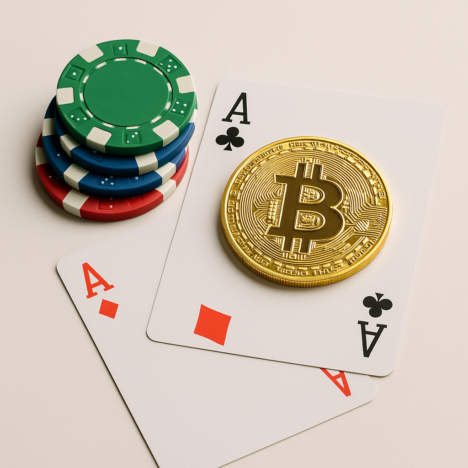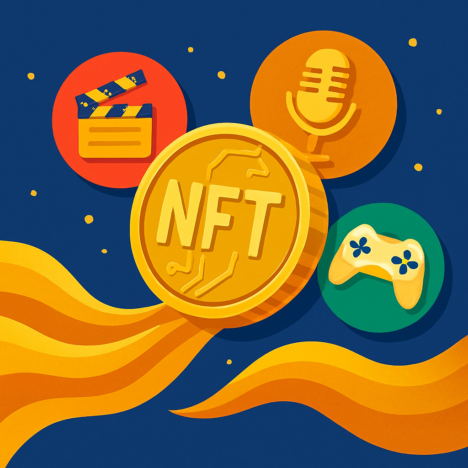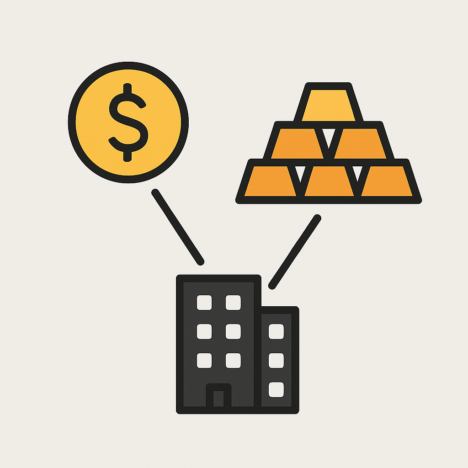Analyzing the risk/reward psychology behind crypto—and how it stacks up to traditional markets
A Question Worth Asking…
Ask ten people about crypto, and you’ll get ten different answers.
- “It’s the future of money!”
- “It’s a Ponzi scheme.”
- “It’s digital gold.”
- “It’s just gambling.”
And that last one stings a little, doesn’t it?
Because on the surface, it’s not hard to see why critics call crypto a casino: rapid price swings, meme coins that moon overnight, influencers pushing tokens harder than diet teas, and of course—people losing it all chasing the next 100x.
But is that the full story?
Or is crypto actually an emerging asset class with the potential for long-term wealth creation—if approached with the right mindset?
Let’s break it down:
- What makes something gambling vs investing?
- How does crypto fit into that spectrum?
- And what can you do to tilt the odds in your favor?
🎯 Definitions First: What’s Gambling? What’s Investing?
Let’s get academic (but not boring):
Gambling
The act of risking money on an event with an uncertain outcome, primarily based on chance, often with no underlying asset or predictable return.
Investing
The act of allocating capital with the expectation of generating profit through the growth or income of an underlying asset over time. Often based on analysis, fundamentals, and a time horizon.
In other words:
- Gambling = short-term thrill, high risk, low control
- Investing = long-term value, calculated risk, ownership of something meaningful
So, where does crypto land?
Answer: It depends entirely on how you approach it.
📉 Crypto as Gambling: Why the Criticism Isn’t Totally Wrong
Let’s be honest. There’s a reason why people say crypto is gambling.
1. Wild Volatility
Bitcoin can lose or gain 10% in a day. Altcoins? Try 50% or more.
For newcomers without a plan, this looks—and feels—like roulette.
2. Speculative Tokens
Many coins have no real utility, revenue, or use case. Meme coins like DOGE, SHIB, and PEPE are bought solely on hype.
3. Herd Mentality and FOMO
People pile in during bull markets, driven by fear of missing out—not fundamentals. Then panic sell during crashes.
4. Scams, Rugs, and False Promises
Unregulated space = playground for pump-and-dumps, fake projects, and manipulated tokens.
If your crypto “strategy” is picking coins based on a YouTube thumbnail… yeah, that’s not investing.
That’s speculation at best.
📈 Crypto as Investing: The Other Side of the Coin
Now for the truth that skeptics overlook.
Crypto can absolutely be a legitimate, high-risk investment category—just like:
- Early-stage tech startups
- Emerging market equities
- Pre-IPO companies
Let’s compare it to traditional investing logic.
1. Bitcoin = Store of Value Thesis
Limited supply. Increasing demand. Institutional interest. Growing adoption.
Sounds a lot like digital gold.
2. Ethereum and Smart Contracts
You’re investing in a technology platform—like investing in early Microsoft or AWS.
ETH has fees, developer activity, and economic throughput.
3. On-Chain Revenue and Yield
Protocols now generate actual fees (Uniswap, Aave, Lido).
You can earn staking rewards, lending interest, or governance tokens—passive income in a Web3 economy.
4. Diversification of Risk Profiles
You can invest in stablecoins for low-risk DeFi yields, or high-risk altcoins for asymmetric upside. The market has evolved.
It’s still risky—but so were early internet stocks.
And unlike gambling, smart crypto investing gives you ownership, strategy, and compounding benefits.
🧪 Let’s Compare: Crypto vs Stocks, Bonds, and Casinos
| Feature | Gambling | Stocks | Crypto (Speculation) | Crypto (Investing) |
|---|---|---|---|---|
| Underlying Asset | ❌ None | ✅ Equity | ❌ Not always | ✅ Often (platforms, tokens) |
| Risk Level | 🔥 Extremely high | ⚠️ Moderate | 🔥 Extremely high | ⚠️ High to Moderate |
| Time Horizon | ⏱️ Minutes | 📆 Years | ⏱️ Hours to Days | 📆 Months to Years |
| Skill Required | 🎲 Low | 📊 Medium | 💥 Low-Medium | 📚 High |
| Regulatory Oversight | ✅ Yes (in casinos) | ✅ Yes | ❌ Not always | ⚠️ Growing |
| Emotional Control Needed | 🎯 High | 🎯 High | 🚨 Very High | ✅ Always |
Moral of the story? Crypto is a toolbox. You choose whether you bring a blueprint or a scratch ticket.
💡 So, What’s the Healthiest Way to Approach Crypto?
Here’s how to keep your head straight and avoid treating your Ledger like a slot machine.
✅ 1. Have a Strategy
- Dollar-cost average (DCA) into projects with real use cases.
- Set targets for profit-taking or rebalancing.
- Define your time horizon: Are you investing for 3 years? 10?
✅ 2. Diversify Across Risk Profiles
- Mix Bitcoin, ETH, stablecoin yield, and carefully vetted altcoins.
- Allocate only a small percentage to moonshot bets.
✅ 3. Use Reputable Tools
Buy crypto through platforms that prioritize security, ease, and transparency.
If you’re new to crypto and want a trusted, beginner-friendly option to convert your fiat into Bitcoin or other major tokens, consider starting with platforms like Changelly, where you can swap or purchase crypto with ease.
👉 Buy Bitcoin securely with Changelly
They’ve streamlined the process and support multiple currencies, making your crypto onboarding smooth—especially if you’re investing with purpose, not gambling on vibes.
✅ 4. Tune Out the Noise
You don’t need to ape into every new coin. Be selective. Be boring, even.
“Boring gets rich. Excited gets rugged.”
🧠 Mindset Matters Most
Here’s a simple test:
- If you check the price 10 times a day… you’re probably gambling.
- If you zoom out, read fundamentals, and compound your knowledge… you’re investing.
Crypto doesn’t reward the loudest. It rewards the most disciplined.
🏁 Final Verdict: It’s Not the Tool. It’s How You Use It.
Is crypto gambling or investing?
The answer is:
Crypto is a neutral technology. Your approach decides the category.
It can be:
- A speculative bet you brag about until you lose everything
- A long-term exposure to bleeding-edge infrastructure
- A casino with bad odds and high stress
- A new layer of global finance and economic freedom
It all comes down to how you play the game.
So no, crypto isn’t gambling—unless you treat it that way.
Do your homework. Stay humble. Build conviction.
And remember: in the long run, it’s not about timing the top. It’s about time in the market—even in a market as wild as this one.




